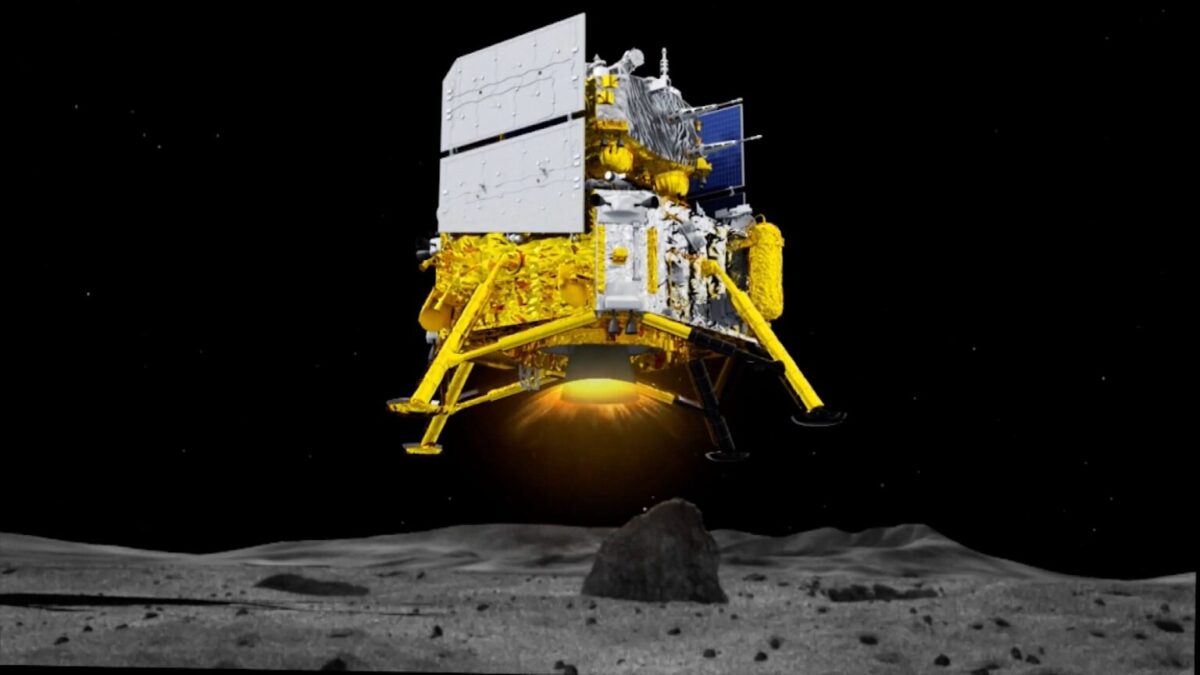China’s Chang’e-6 probe successfully landed on the far side of the moon on Sunday at 6:23 a.m. Beijing Time, with the objective of collecting samples from the South Pole-Aitken (SPA) Basin within a two-day timeframe. The China National Space Administration (CNSA) announced that the lander-ascender combination of the Chang’e-6 probe, supported by the Queqiao-2 relay satellite, touched down at the designated landing area in the SPA Basin. This mission has achieved technological milestones, including advancements in lunar retrograde orbit design and control technology. The CNSA stated that the probe will proceed to carry out crucial tasks such as intelligent, rapid sampling from the lunar far side and lunar surface take-off.
Named after the Chinese moon goddess, the Chang’e-6 probe comprises an orbiter, a returner, a lander, and an ascender. Since its launch on May 3, it has undergone various stages such as Earth-moon transfer, near-moon braking, lunar orbiting, and landing descent. The lander-ascender combination detached from the orbiter-returner combination on May 30.
The chosen landing site for Chang’e-6 is the Apollo Basin, situated within the SPA Basin, selected for its scientific exploration potential and favorable landing conditions, including communication and telemetry capabilities and the terrain’s flatness. At 6:09 a.m. on Sunday, the lander initiated its descent from approximately 15 kilometers above the lunar surface, employing its 7,500-newton-thrust engine to slow down. Cameras on the lander captured images of the landing area, facilitating hazard identification, such as large rocks, for maneuvering purposes. The combination suspended its descent around 100 meters above the lunar surface to conduct precise detection of smaller obstacles before resuming its descent at a slower, consistent pace.
Chang’e-6 faces distinct terrain compared to the Chang’e-5 sample mission, necessitating a relay satellite for communication and heightened efficiency and time sensitivity.
To expedite the sampling process on the moon’s far side, Chang’e-6 is anticipated to complete sampling approximately 14 hours after landing, a notable reduction from Chang’e-5’s 22-hour duration. The probe will employ two sampling methods, utilizing a drill to retrieve subsurface samples and a robotic arm to collect surface samples. The development team, led by space expert Jin Shengyi from the CASC, meticulously simulated the lunar landing site to develop and verify sampling strategies and equipment control procedures, ensuring the accuracy of instructions sent to the probe.
Chang’e-6 introduces an intelligent sampling process, enabling autonomous execution of instructions and real-time decision-making based on sensor data, minimizing delays caused by Earth-moon signal lag and streamlining the sampling process.









